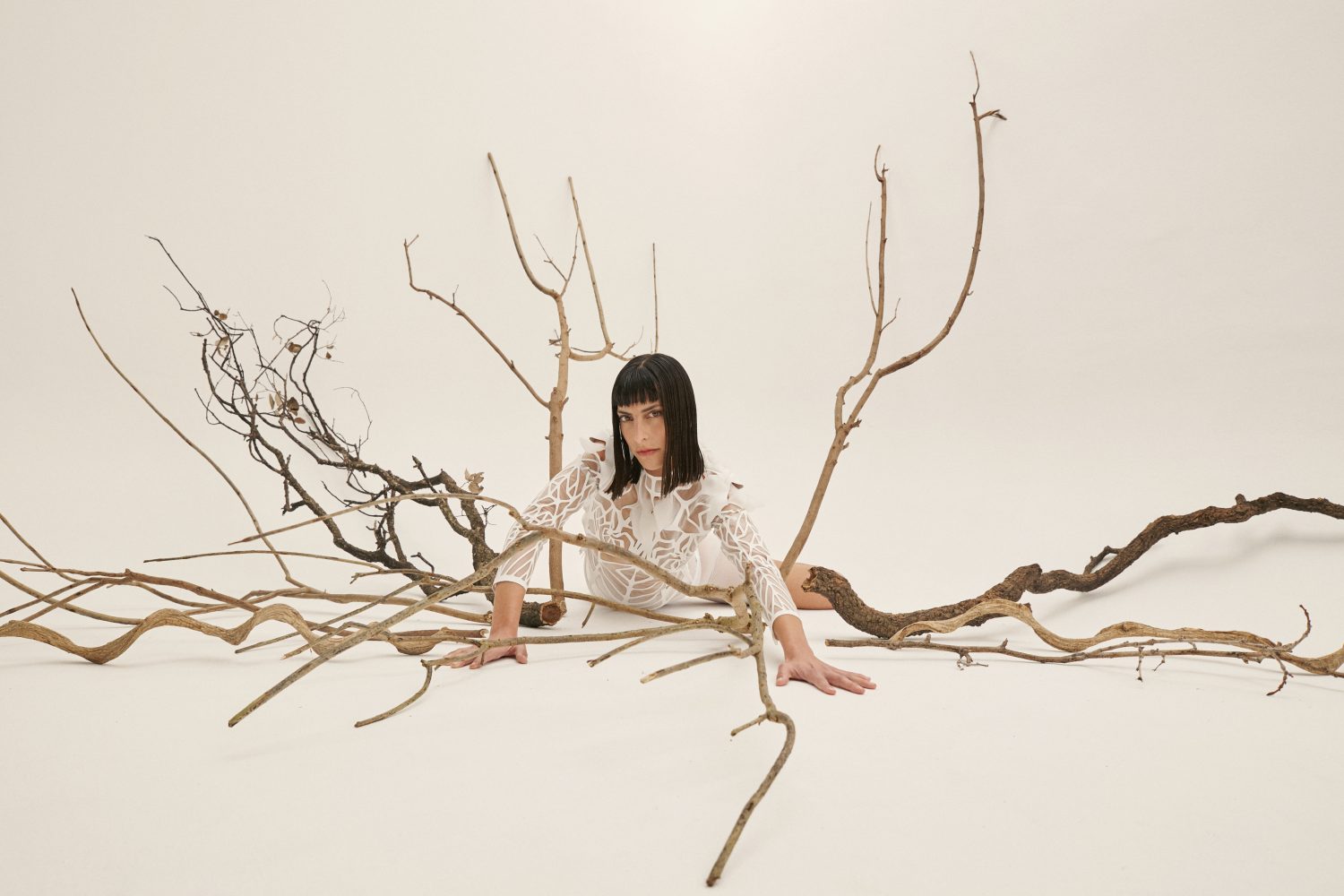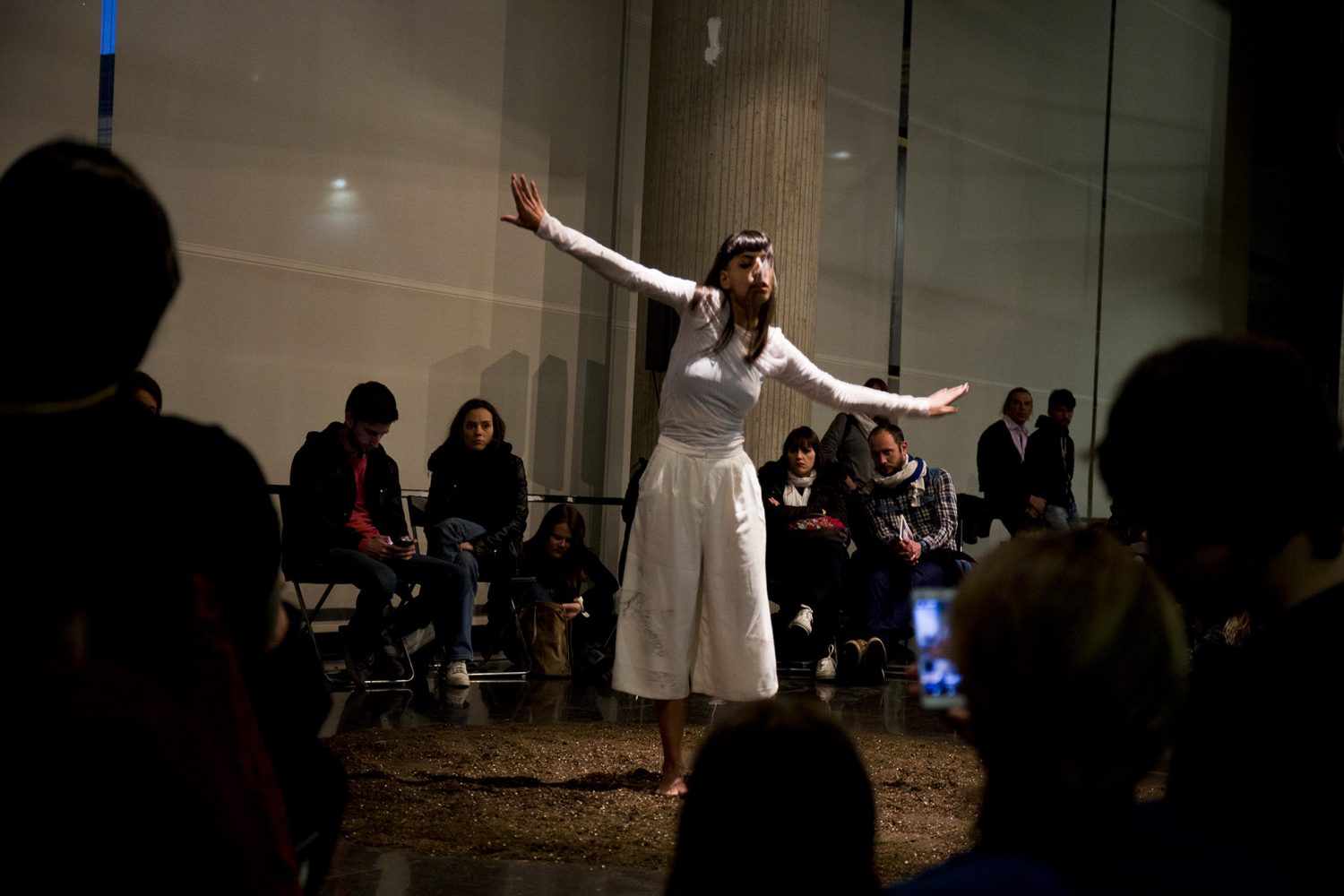Three questions with Moon Ribas
Moon Ribas is a Catalan avant-garde artist and cyborg activist best known for developing the Seismic Sense, an online seismic sensor in her feet that allows her to perceive earthquakes taking place anywhere in the planet through vibrations in real time. In order to share her experience, she then translates her seismic sense on stage. Ribas transposes the earthquakes into either sound, in her piece Seismic Percussion; or dance, in Waiting For Earthquakes. In these performances the Earth is the composer and the choreographer; and Ribas, the interpreter. Ribas’ seismic sense also allows her to feel moonquakes, the seismic activity on the Moon. Ribas believes that by extending our senses to perceive outside the planet, we can all become senstronauts. Adding this new sense allows her to be physically on Earth while she feels the Moon, so in a way, she is on Earth and space at the same time.


Since 2007 Moon has been experimenting with the union between technology and her body to explore the boundaries of perception and to experience movement in a deeper way. Some of her previous research includes transdental communication, 360º perception and the Speedborg. In 2010 she co-founded the Cyborg Foundation, an international organisation that aims to help people become cyborgs, defend cyborg rights and promote cyborg art. Ribas also co-founded the Transpecies Society in 2017, an association that gives voice to non-human identities, defends the freedom of self-design and offers the creation of new senses and new organs in community.
In 2022 the team of European Alternatives invited Moon to participate at the Transeuropa Festival in Porto. This interview was held on the occasion of the opening event.
1. What does it mean to be a cyborg artist or transpieces and how has being a cyborg artist influenced your work? Could you imagine your work without the influence of technology?
Cyborg art is the art of designing your own perception of reality, by creating new senses and organs. It’s an artwork that happens inside the artist, so in a way, we are the only audience of our own art, as we are the only ones perceiving the new sense. This can sometimes be very solitary, so in order to share what we feel, we create external artwork through performance, music, art installations, etc.
Becoming a cyborg artist has influenced my work completely, first I think it’s very different to know that the Earth is moving, that actually feeling that the Earth is moving, gives a more profound experience, a deeper connection to reality.
And for my artistic practice, it has been very relevant too, because in my artwork I put Earth itself as the center of my work, treating her as the choreographer, composer, the artist, and myself as the interpreter or the channel to visualize and connect to Earth. In the times we are living, I think it’s important to stop putting humans as the center of the world, and start putting other living things in the center.
2. As an artist and activist, one of your objectives has been communicating how technology can bring us closer to nature. How do you think this actually happens? How can something that seems to be so far away from nature in the common understanding of technology, bring us closer to nature?
Yes, I think art can help us to change the use that we ordinarily have of technology. Usually we think of technology as being very practical, and functional. Also, distant and cold from nature, I myself thought that for a very long time. But technology can also be a great tool, to connect you deeper with your surroundings, for better understanding where we are, how our planet works, how other species live. It can help us to see reality from another point of view and have another experience, and this I think, it’s the essence of what art is. Wondering where we are, and canalizing the experiences we have. It’s a human choice to decide how to use technology, it definitely can be used to alienate us from nature, but we are the only ones who can make sure
that technology brings us closer to nature, other species and even space.
3. How do you think art and technology can help going beyond a human-centric point of view in order for a sustainable planet life?
I think technology can help us to re-learn how to live on our own planet, if we understand better where we are, we can adapt better to it. For example, after perceiving seismic activity for almost seven years, I was wondering: how is it possible that humans have built these huge cities at the edge of the tectonic plates? These are actually dangerous places to live.. Would animals have done that? For many many years, humans have been modifying our environment in order to live more comfortably. Maybe it’s time, we should modify ourselves in order to adapt better to Earth.
Also, technology can help us to learn how other species live, and we can get inspired by them, how they perceive reality, and how they adapt.
Moon Ribas is an award-winning Catalan avant-garde artist and co-founder of the Cyborg Foundation and Transpecies Society.